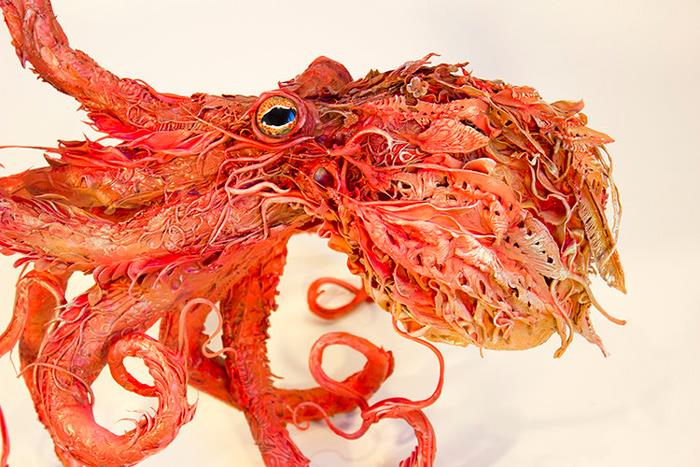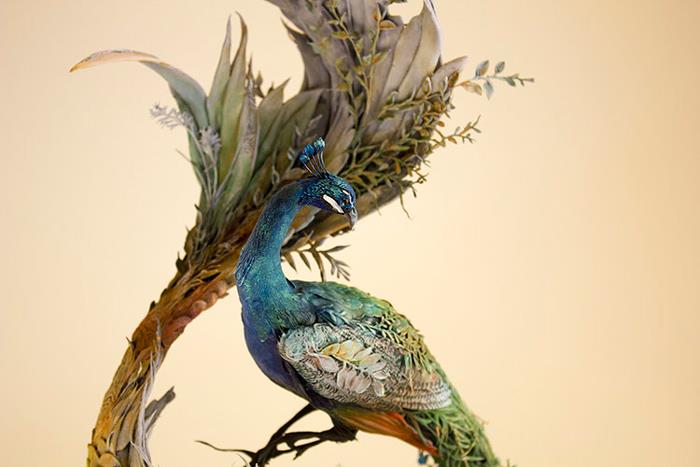
Sustainable Art Practices: How American Artists Are Going Green

Strange and gentle X, 2016. Detail. Image courtesy of Ellen Jewett The Green Art Movement: An Overview
The green art movement is characterized by an increased awareness of environmental issues, driven by the urgency of climate change, resource depletion, and waste management challenges. Artists around the world, particularly in the USA, are harnessing their creative talents to address these pressing concerns. Many are exploring sustainable themes in their work, while others are dedicated to minimizing their environmental footprint through eco-friendly materials and processes.
This trend is not merely a passing fad; rather, it signifies a critical transformation in the way art is created, consumed, and valued. As American artists begin to rethink their practices, we see the emergence of innovative techniques, sustainable sourcing of materials, and the integration of social activism into their narratives.
A disquieting intellect and tradion, 2017. Image courtesy of Ellen Jewett Eco-Friendly Materials: Redefining Artistic Creation
One of the primary ways artists are committing to sustainable art practices is by utilizing eco-friendly materials. Traditional art supplies may contain harmful chemicals, non-biodegradable substances, and materials that are detrimental to the environment. In contrast, sustainable art favors natural, recycled, or reclaimed materials that have a minimal ecological impact.
For instance, many artists are turning to organic paints made from plant-based pigments and natural binders. These paints not only offer rich colors but also eliminate toxic fumes and waste associated with conventional art supplies. Additionally, artists are discovering the potential of using recycled paper, upcycled fabrics, and found objects to create original works, fostering a sense of resourcefulness and creativity.
Prominent figures within the sustainable art sphere, such as artists like Ellen Jewett and Michael Jantzen, exemplify the use of sustainable materials in their artwork. Jewett, known for her intricate sculptures of animals fashioned from reclaimed materials, emphasizes the importance of coexistence with nature. Meanwhile, Jantzen's architectural installations and conceptual designs highlight innovative techniques for reducing waste and harnessing renewable resources.

Our complementary differences, 2017. Detail. Image courtesy of Ellen Jewett Process Matters: Eco-Conscious Techniques
Beyond their choice of materials, many artists are adopting eco-conscious techniques to minimize their environmental footprint. This includes altering their working processes to incorporate sustainability at every stage, from conception to exhibition. Collaborative projects involving local communities and artists are becoming more common, fostering awareness around environmental challenges while providing a platform for shared voices.
For instance, environmental artist Maya Lin, renowned for her work on the Vietnam Veterans Memorial, extends her commitment to sustainability through her engagements with landscape design and restoration projects. Lin's“What Is Missing?” project encourages ecological stewardship and raises awareness about biodiversity loss through art installations that resonate with nature's fragility.
Moreover, advances in technology have opened new avenues for sustainable practices. Digital art and virtual installations are on the rise, enabling artists to reach audiences without the need for physical materials or transportation. This eliminates the waste associated with traditional art forms and encourages a more sustainable approach to creative expression.
Sustainability in Public Art and Community EngagementThe commitment to sustainable art practices extends beyond the confines of individual studios, finding its way into public art initiatives and community programs. American artists are collaborating with local governments, environmental organizations, and activists to install art that directly engages with environmental themes and promotes sustainability.
Public projects often transform neglected spaces into vibrant art installations while raising awareness about local environmental challenges. For example, the“Trash Talk” project, conceived by artist Chris Jordan, highlighted the staggering amounts of waste generated in American society through large-scale photographic representations of trash. This work serves as a reminder of consumption's impact on the world and its potential consequences.
Additionally, community-based art initiatives are empowering individuals to engage in dialogue regarding environmental issues using creativity as a vehicle for transformation. Programs that focus on eco-art educate participants about sustainability and encourage them to collaborate on environmentally themed projects.
The Role of Art InstitutionsAs sustainable art practices gain traction, art institutions in the USA are also beginning to embrace this movement. Galleries, museums, and educational institutions are organizing exhibitions that showcase eco-friendly art and highlight the importance of sustainability in the creative process.
For instance, various art fairs and biennials now include sections dedicated to sustainable art practices, allowing artists to present their work alongside discussions centered on environmentalism and social responsibility. These platforms not only celebrate artists leading the way in sustainable practices but also offer them an opportunity to engage with broader audiences and inspire dialogue around eco-friendly initiatives.
Beyond showcasing art, institutions are increasingly committed to sustainability in their operations. From adopting green building practices and implementing recycling programs to reducing energy consumption through renewable alternatives, many are actively striving to reduce their ecological footprint.
Challenges and ConsiderationsWhile the rise of sustainable art practices offers exciting new opportunities, it also presents challenges. Artists often face difficulties in accessing affordable eco-friendly materials or alternative processes that fulfill both artistic and ethical criteria. Additionally, the market for sustainable art is still developing, creating questions regarding pricing, valuation, and curatorial support.
The green art movement also prompts important discussions about the nature of art itself. As artists navigate ethical considerations surrounding environmental degradation, they must balance traditional artistic ideals with the growing responsibility of addressing pressing global challenges.
Sustainable art practices are ushering in a new era of creative expression in the USA, with artists leading the way in eco-friendly materials and processes. By reimagining their artwork and engaging with their communities, American artists are not only addressing ecological concerns but also fostering a deeper understanding of the interconnectedness of humans and the environment. As the green art movement flourishes, it challenges us all to consider our role in fostering a more sustainable future-one where creativity and environmental stewardship go hand in hand.

Legal Disclaimer:
MENAFN provides the
information “as is” without warranty of any kind. We do not accept
any responsibility or liability for the accuracy, content, images,
videos, licenses, completeness, legality, or reliability of the information
contained in this article. If you have any complaints or copyright
issues related to this article, kindly contact the provider above.






















Comments
No comment